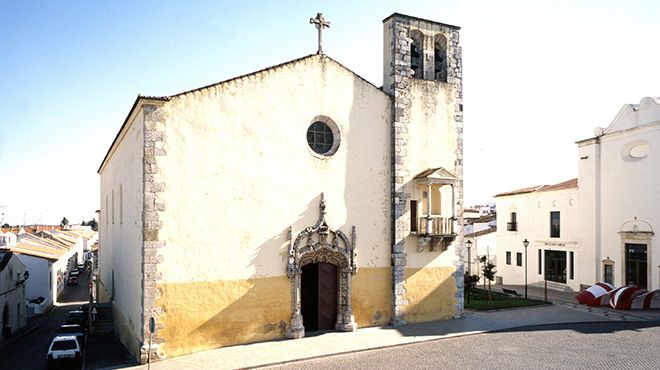Moura

Moura
Towns and Villages
There are many interesting features for visitors to see in this bright and cheerful Alentejo town situated close to the River Guadiana. This is a region of undulating hills, planted with extensive olive-groves and producing some excellent wines. The town's conquest from the Moors by the brothers Pedro and Álvaro Rodrigues in 1166 is closely linked to the colourful legend of the Moorish maiden Salúquia, evoked by the old tower that can still be seen close to the Jardim Dr. Santiago.
It was D. Dinis (1279-1325) who rebuilt Moura's fortifications and gave the town its first charter in 1295. D. Manuel I (1495-1521) granted the town a new charter and ordered the Castle to be rebuilt under the supervision of the master builder Francisco de Arruda.
Any stroll through the town must surely include a visit to the Mouraria, one of the largest and best preserved Moorish quarters in the whole country, displaying all the typical characteristics of Arab residential areas. In Rua da Muralha Nova, on the edge of this quarter, visitors can see a section of the walls of the castle built in the late 17th century. Another essential item to be included in a tour of the town is the Arab Museum. This has been built around a well that dates from the time of the Moorish occupation and is in an excellent state of preservation.
Above the building that was once the Town Hall but now houses the Municipal Library, there rises the impressive Torre da Taipa, also from the Arab period.
As you stroll through the streets of Moura, observe the thick chimneys following the vertical lines of the house walls, a typical feature of Alentejo architecture. You will also find some delightful churches: the parish church dedicated to São João Baptista and the churches of Carmo and São Francisco are worthy of greater attention.
Moura also contains a unique example of early 17th-century military architecture, known as the Edifício dos Quartéis. This row of buildings once included a group of south-facing and north-facing barracks. At one of the ends is the chapel of Senhor Jesus dos Quartéis.
Roughly 3 kilometres from the town, there is a picturesque military watchtower known as Atalaia Magra, standing atop an isolated hill.
It was D. Dinis (1279-1325) who rebuilt Moura's fortifications and gave the town its first charter in 1295. D. Manuel I (1495-1521) granted the town a new charter and ordered the Castle to be rebuilt under the supervision of the master builder Francisco de Arruda.
Any stroll through the town must surely include a visit to the Mouraria, one of the largest and best preserved Moorish quarters in the whole country, displaying all the typical characteristics of Arab residential areas. In Rua da Muralha Nova, on the edge of this quarter, visitors can see a section of the walls of the castle built in the late 17th century. Another essential item to be included in a tour of the town is the Arab Museum. This has been built around a well that dates from the time of the Moorish occupation and is in an excellent state of preservation.
Above the building that was once the Town Hall but now houses the Municipal Library, there rises the impressive Torre da Taipa, also from the Arab period.
As you stroll through the streets of Moura, observe the thick chimneys following the vertical lines of the house walls, a typical feature of Alentejo architecture. You will also find some delightful churches: the parish church dedicated to São João Baptista and the churches of Carmo and São Francisco are worthy of greater attention.
Moura also contains a unique example of early 17th-century military architecture, known as the Edifício dos Quartéis. This row of buildings once included a group of south-facing and north-facing barracks. At one of the ends is the chapel of Senhor Jesus dos Quartéis.
Roughly 3 kilometres from the town, there is a picturesque military watchtower known as Atalaia Magra, standing atop an isolated hill.




 Explore
Explore 
 Remember and Share
Remember and Share 


